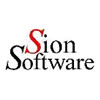
Sion Software has released version 12.0 of QuickScore Elite Level II which features a new way to enter music, up to 8 MIDI outs, chord names, guitar chords, dynamics, tempi and pedals that play, and faster formatting and symbol entry. Plus better-looking music.
Changes:
- Enter music with a Virtual Keyboard: The virtual keyboard works exactly the same as a keyboard attached to your MIDI In. It can be used to record in real time or step time. Notes can be input via the computer keyboard or the mouse. It is available from the View menu.
- Select up to 8 MIDI Output ports: Up to 8 MIDI Output ports can be selected at once, giving up to 128 simultaneous channels. These channels are also available to VST instruments.
- Chord names, guitar chords, dynamics, tempi and pedals that play: Chord names, guitar chords, dynamics, tempi and pedals now can play automatically. Options for playing repeats, articulations, chords, guitar grids, dynamics, tempi and pedals are set in the Play Symbols dialog available under the Options menu.
- Format music on the fly: CTRL Right Mouse can be used to bring up the Bar Display dialog when in the Score Editor.
- Fast arpeggios, fingering numbers, dynamics and pedal markings: Enter arpeggios simply by control-clicking the notes to be arpeggiated, while in note entry mode. Enter all your fingering numbers without having to go back and forth to the symbols palette. Set the fingering numbers as you enter them simply by using the LEFT and RIGHT keys! Same thing for dynamics and pedals markings.
- Map Controllers, Pitch Bend and Aftertouch: Controllers, Pitch Bend and Aftertouch from MIDI Input can be mapped to any other Controller, Pitch Bend or Aftertouch. Set this in the MIDI Thru dialog.
- Better looking music:
- Barlines at the the right edge of the page appear in front of courtesy key signatures and time signatures.
- Spacing of music takes into account the widths of barlines (such as double barlines and repeats) and extends more fully to the right edge of the page.
- Now when you enter a clef or octava, a new note group is created so notes follow the changes no matter where the clef or octava is entered. Formerly the music took clefs and octava changes into account only at the beginning of a new beat or note grouping.
- Arpeggios are now offset by 2 spaces so they automatically are to the left of notes at same time.
- Rests in tracks or bars can be displayed by voice, with all voices together as if they were a single voice, or not at all. This is set in the Display Bar dialog and the Display Track dialog.
- Transcription of unquantized music has been improved.
- Put clefs anywhere in a split track: Clefs can be inserted anywhere in a split track, in either the top or the bottom staff.
- Generate harmony from guitar chords: It is now possible to generate harmony from guitar chords in the Generate Harmony dialog.
- Better VST support: VST support for MIDI effects have been improved.
- Better MusicXML and NIFF support: MusicXML import and export and NIFF import have been improved. Among other things, MusicXML import and export now recognize braces and brackets.


